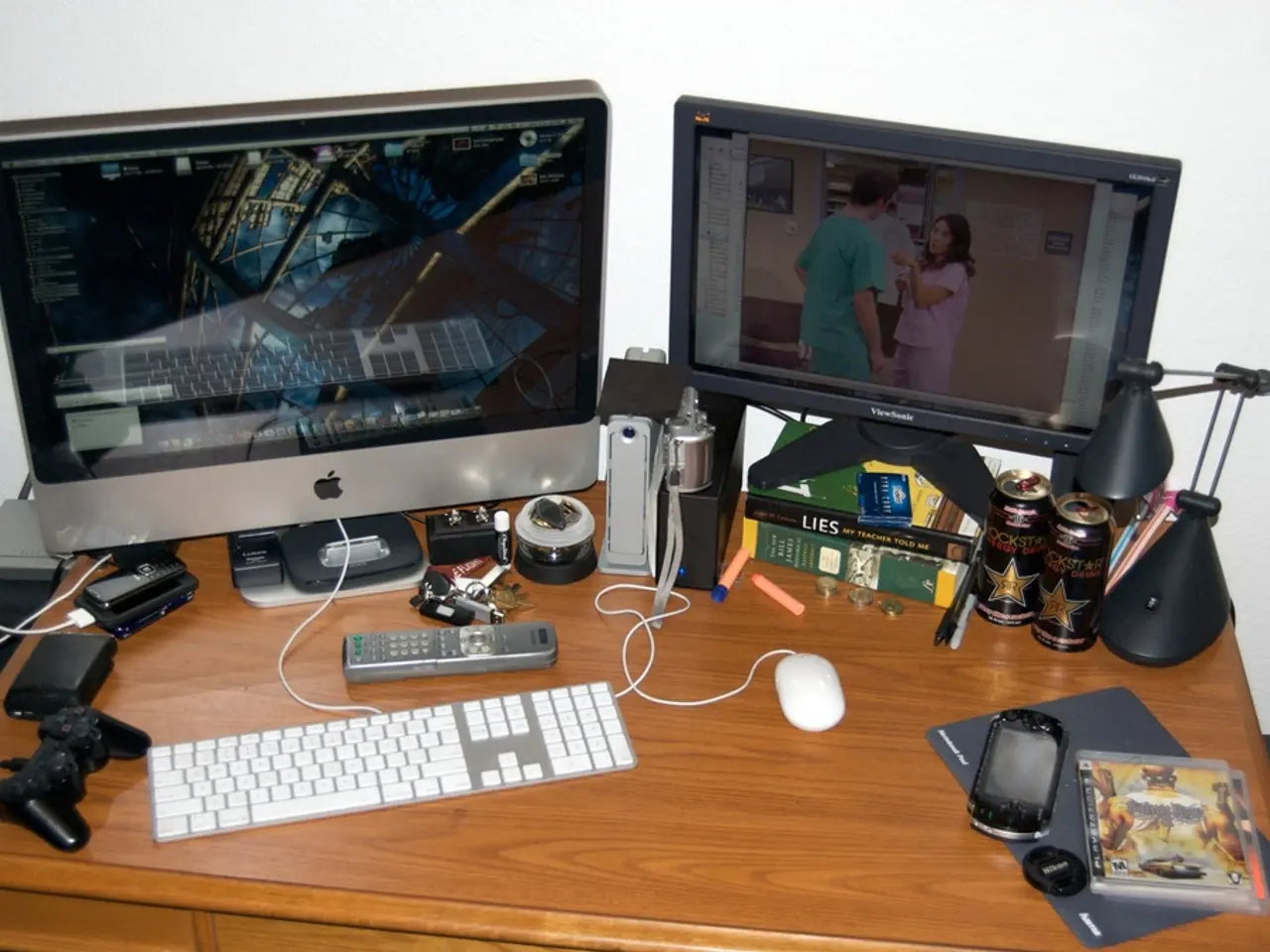Microsoft's Abandoned Windows-Powered Surface Duo: The Elusive Dual-Screen Windows Phone from 2018 That Never Materialized
The death of the Andromeda device in 2018 marked the end of Windows Phone, as it was intended to replace the Windows 10 Mobile platform. This project, which began as a Windows Phone named Andromeda, was a bold attempt to redefine mobile productivity with a dual-screen format that was ahead of its time.
Andromeda was designed as a digital pocket notebook, prioritizing inking and pen use. The device was codenamed and built as a dual-screen device, with a unique design that was quite different from the Surface Duo that eventually followed. The prototype was narrower and taller, featuring a home button beneath the displays and a fabric-like outer shell, giving it a journal-like aesthetic.
The device ran on a specialized version of Windows called Windows Core OS, designed specifically for the dual-screen experience. Key features included a "home screen" modeled as a digital journal always ready for inking with a Surface Pen, enabling users to jot notes, create reminders, or sticky notes. Apps ran above this journal and could be accessed from a Start menu activated by swiping from the left on the left display.
Cortana functioned as both a digital assistant and notification center, accessible via a swipe from the right side of the right display. Even the lock screen was designed as a digital inking canvas, emphasizing pen input as a core interaction method.
New images discovered on Chinese commerce platform GooFish show prototype Andromeda hardware from 2017 and 2018. These images reveal that the original Surface Duo omitted a back camera system, wireless charging for the Surface Slim Pen, and a metal frame compared to the prototype Andromeda. Some Andromeda hardware also had a secondary monochrome camera sensor designed to help scan 3D objects.
The universal shell on Andromeda was purpose-built for the dual-screen form factor. Andromeda's hinges were smaller, but they were enlarged on Surface Duo to make them stiffer. The "home screen" of Andromeda was a digital journal that was always ready to ink on.
Microsoft's Andromeda project represents a significant shift in the company's mobile strategy, with a focus on inking, multitasking, and AI assistance. Although the project was scrapped in 2018 due to issues and delays, it provides a fascinating insight into the direction that mobile technology might have taken if it had been successful.
[1] https://www.theverge.com/2018/11/18/18104454/microsoft-andromeda-surface-duo-dual-screen-phone-cancelled [3] https://www.theverge.com/2017/10/27/16566742/microsoft-surface-duo-dual-screen-phone-patent [5] https://www.theverge.com/2017/10/27/16566742/microsoft-surface-duo-dual-screen-phone-patent
- The Windows 11 laptop, similar in concept to the scrapped Andromeda project, might incorporate features that emphasize pen input and multitasking.
- Microsoft's Surface Pro gadget, with its versatile form factor, could potentially benefit from software updates that improve inking capabilities.
- The gaming experience on a Windows 10 PC could be enhanced with hardware innovations inspired by the cancelled Andromeda project.
- The smartphone industry might have evolved differently, had Microsoft's Andromeda project succeeded, with a greater emphasis on inking and AI assistance.
- If future Xbox software development considers the lessons learned from the Andromeda project, we might see unique features that support pen input and dual-screen functionality.
- The productivity of a Windows 11 Surface Laptop could improve significantly with advancements in hardware and software inspired by the Andromeda project.
- The digital journal feature on the Andromeda device could serve as a model for innovative productivity apps across various gadgets, including smartphones and tablets.
- The dual-screen technology initially envisioned for the Andromeda project could revolutionize the way we interact with software on devices, such as laptops and smartphones.




